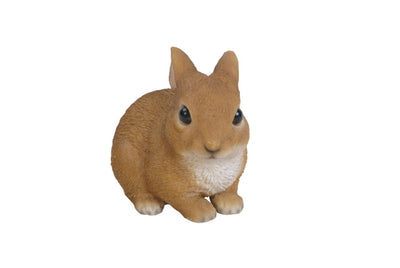Can You Use an Outdoor Fountain Indoors? Key Considerations Before Moving It Inside
Outdoor fountains are often admired for their beauty and calming water sounds, but can they be used indoors? The short answer is yes—with the right adjustments. Before bringing an outdoor fountain inside, it’s essential to consider factors like water flow, size, materials, and maintenance to ensure it fits well within your indoor space.
Metal Lily Flower Pouring Into Bucket Fountain
Space and Placement Considerations
Size and Weight:
Outdoor fountains are typically larger and heavier than indoor models. Consider whether your floor can support the weight, especially if it's made of stone or concrete. If placing it upstairs, ensure the structure can handle the load.
Floor Protection:
Since outdoor fountains often have higher water flow, there’s a risk of splashing. Placing a waterproof mat or tray underneath can protect flooring from water damage.
Electrical Requirements:
Most outdoor fountains run on standard electrical outlets, but ensure the voltage matches indoor use and the power cord is long enough to reach an outlet safely.
Water Flow and Splash Control
Adjusting Water Pressure:
Outdoor fountains often have stronger pumps to withstand wind and environmental factors. Indoors, a high-powered pump may cause excessive splashing. Consider switching to a lower-flow pump or adjusting the current one.
Using Splash Guards:
To prevent water from reaching surrounding furniture or flooring, use splash guards or water-resistant barriers around the fountain.
Humidity Management:
Indoor fountains increase humidity, which can be beneficial in dry climates but may lead to mold in enclosed spaces. Ensure proper ventilation to prevent excess moisture buildup.
Material Durability in Indoor Conditions
Stone and Concrete:
Heavy materials like cast stone or concrete are durable but may require a sturdy base indoors. They can also release dust or residue, requiring regular cleaning.
Metal:
Fountains made of copper, bronze, or stainless steel may develop a patina outdoors, but indoors, they require periodic polishing to maintain their appearance.
Resin and Fiberglass:
Lightweight and versatile, these materials are ideal for indoor use since they are easy to move and clean.
Water Treatment and Maintenance
Algae and Mineral Buildup:
Outdoor fountains often accumulate algae and mineral deposits due to exposure to natural elements. When used indoors, the risk is lower, but regular cleaning is still necessary. Using distilled water can minimize buildup.
Pump Maintenance:
Indoor settings may lead to dust accumulation in the water, affecting pump performance. Clean the pump every few weeks to keep it running efficiently.
Noise Level:
Some outdoor fountains have powerful pumps that may be too noisy for an indoor setting. Switching to a quieter pump or adjusting the water flow can help maintain a relaxing atmosphere.
Aesthetic and Decorative Enhancements
Lighting Adjustments:
Outdoor fountains often have bright LED lights, which may be too intense for indoor ambiance. Switching to warm or dimmable lights can create a cozy effect.
Blending with Indoor Decor:
Consider adding decorative stones, plants, or a tabletop arrangement to make the fountain blend seamlessly with your indoor theme.
Final Thoughts
Using an outdoor fountain indoors is possible with the right modifications. By managing water flow, ensuring proper placement, and maintaining the materials, you can enjoy the soothing sounds of flowing water inside your home. Whether placed in a living room, office, or entryway, a well-adapted fountain can enhance the ambiance and bring a touch of tranquility to any space.
For a wide selection of fountains and home décor options, visit Hilinegift.com, where you'll find quality products to elevate your indoor and outdoor spaces.


















